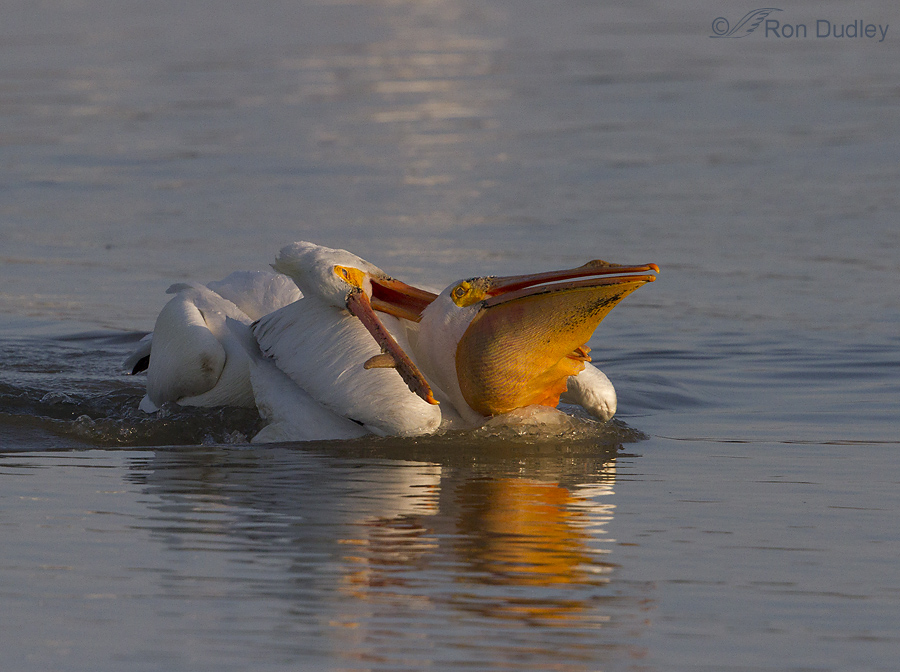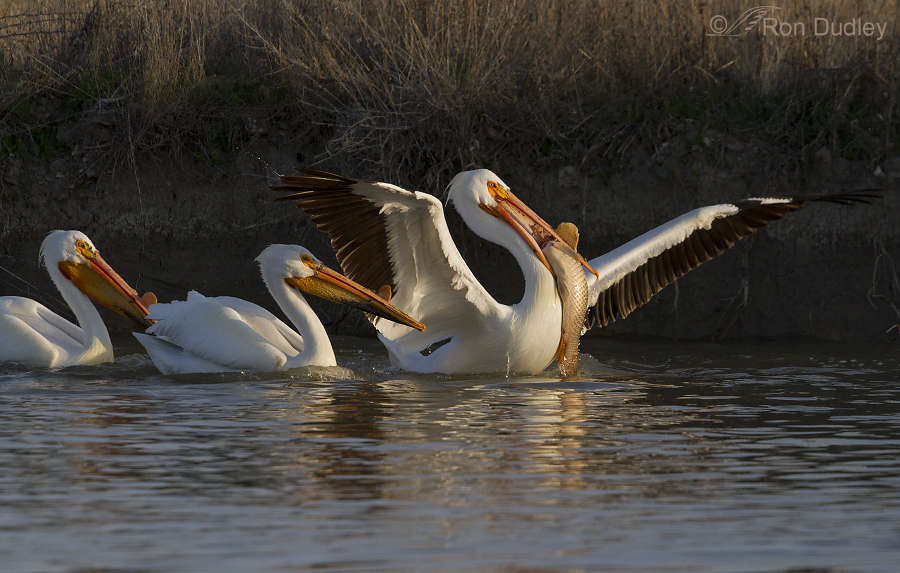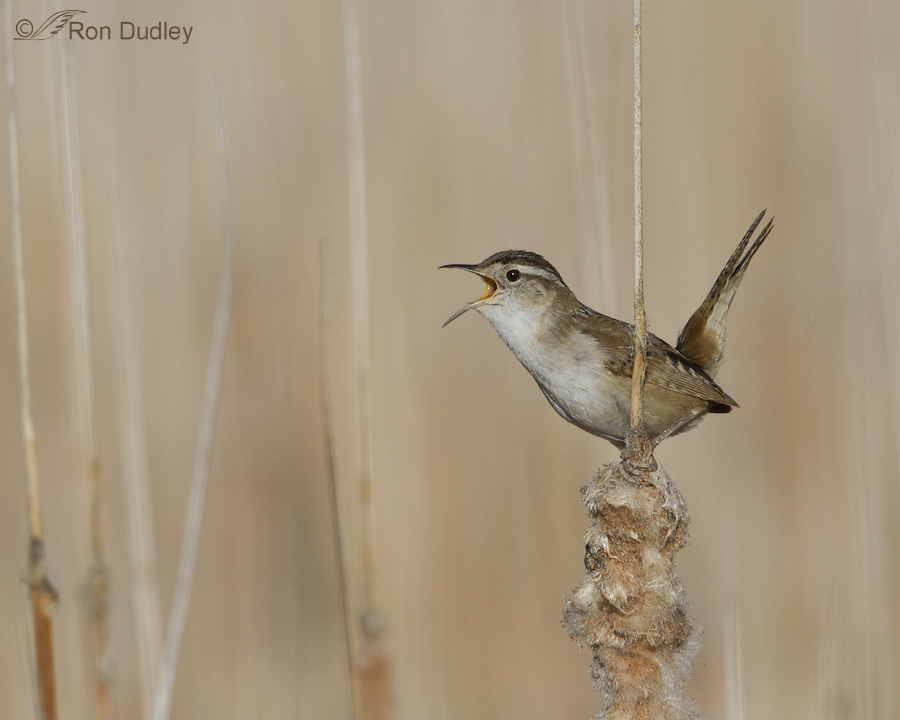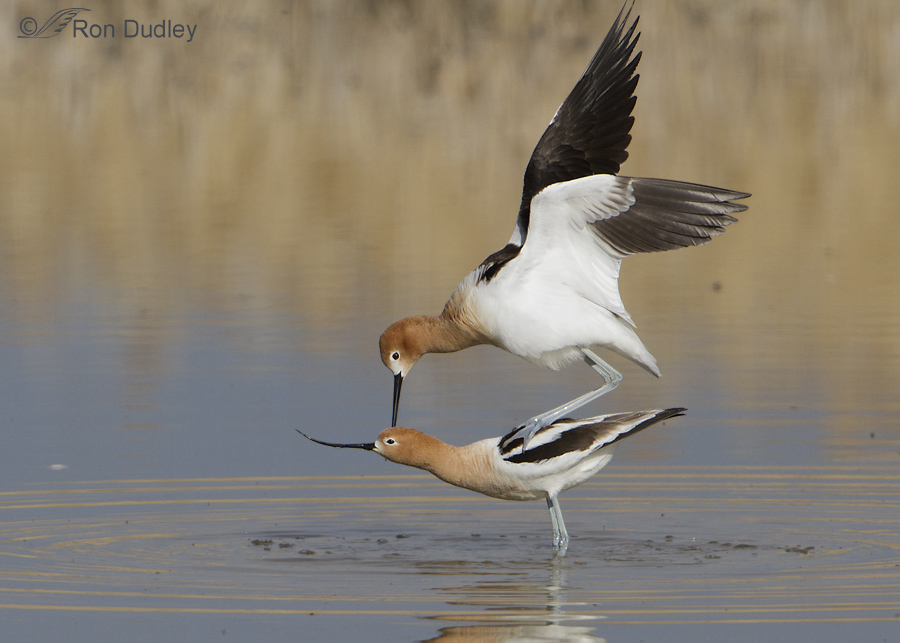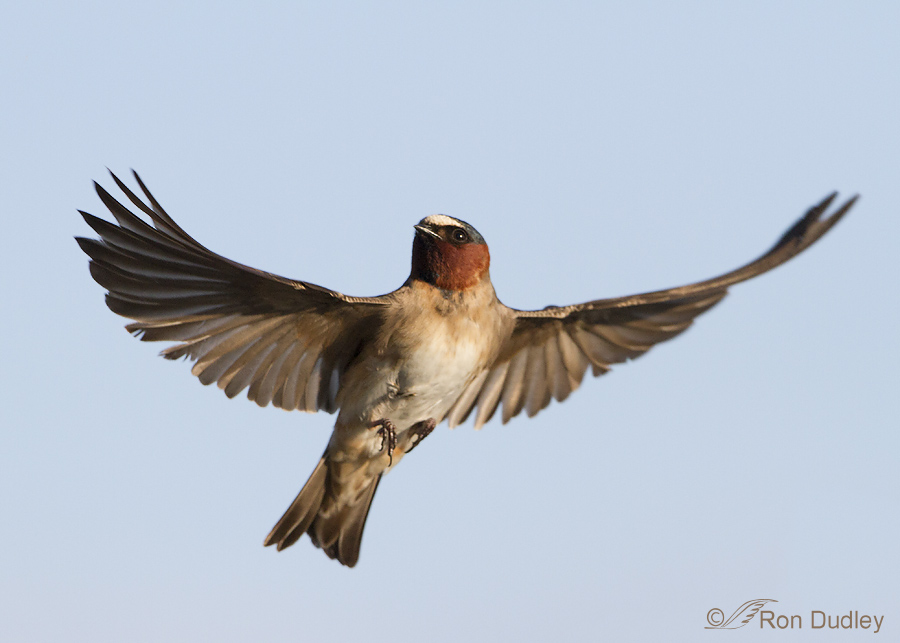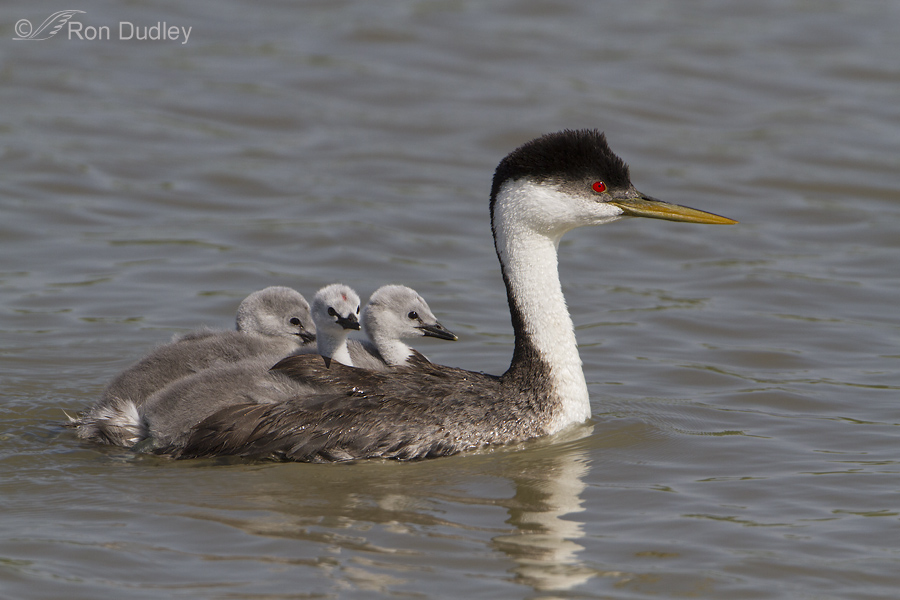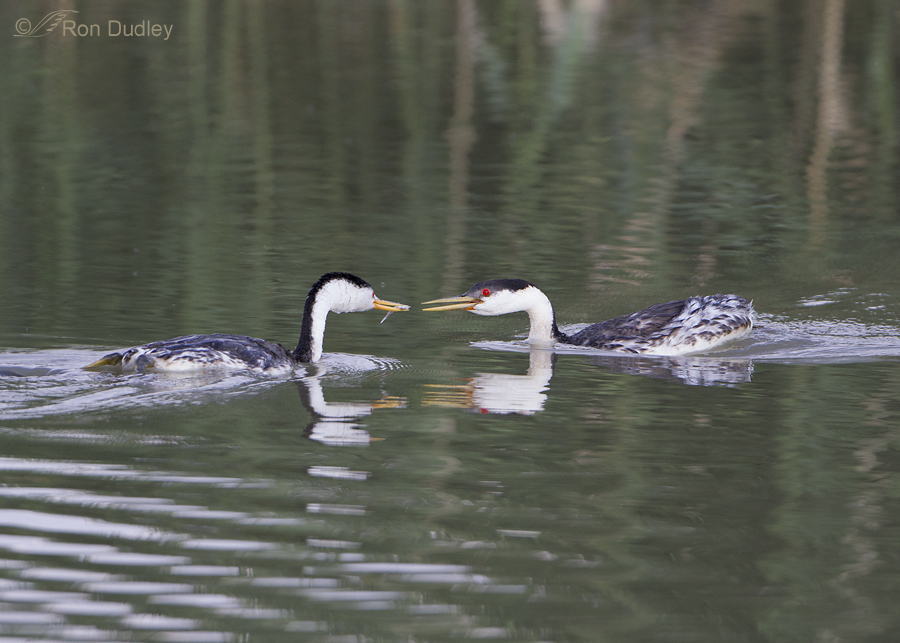Category: Bear River Migratory Bird Refuge
Pelicans And A Fish Too Big To Swallow – Part 1
Singing Male Marsh Wren
Avocet Mating Rituals
Cliff Swallow In Flight
Western Grebe Back-brooded Chicks (and what’s the function of that red crown patch?)
My Love-Hate Relationship With Phragmites
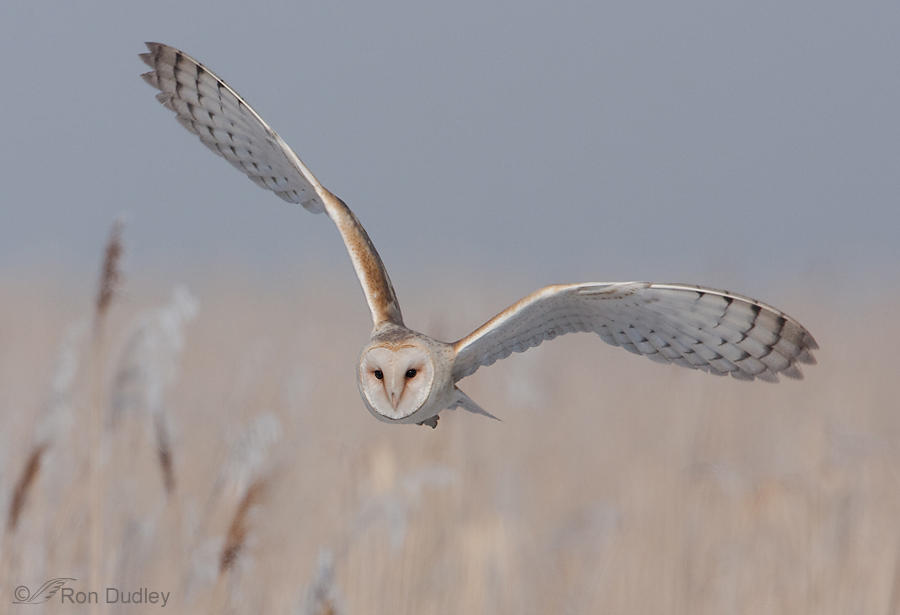
I have a complicated relationship with Phragmites. Though some strains are native to North America, much more vigorous invasive varieties from Eurasia haven taken over many of our wetlands and proven to be extremely difficult to control. Dense “reed stands” of Phragmites with their dramatic seed plumes waving in the breeze can be strikingly beautiful but they’re a huge problem in our wetlands.
Cliff Swallow In Flight
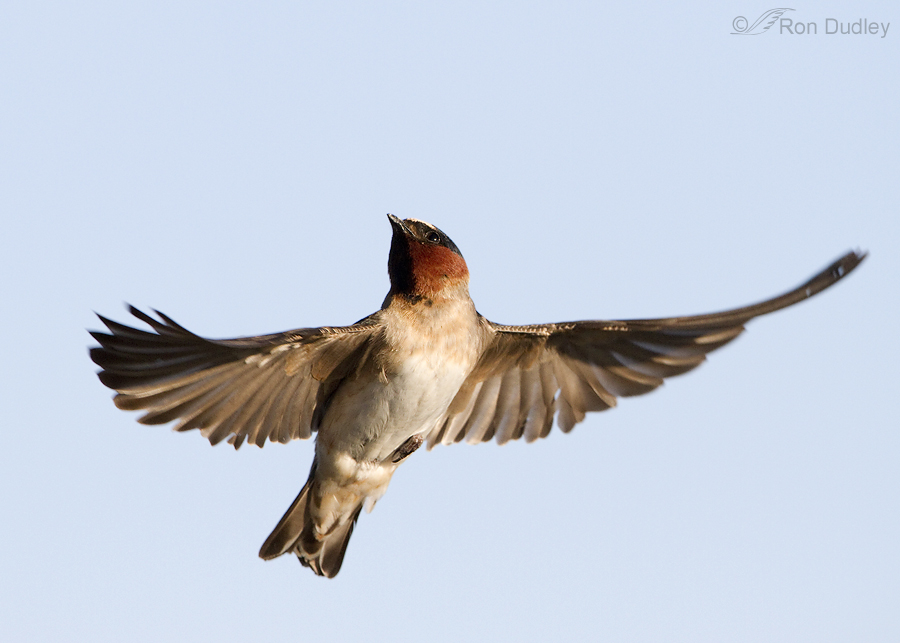
For years I tried to photograph swallows in flight, usually without much strategy – just shooting them wherever I might find them. That typically meant while they were freely flying overhead or buzzing the surface of a pond or stream as they picked off insects and it always meant failure on my part. They’re just too fast, too small and too maneuverable for my autofocus and reflexes.
Then one day I decided to change strategies…
Western Grebe – Dumping The Chick Load
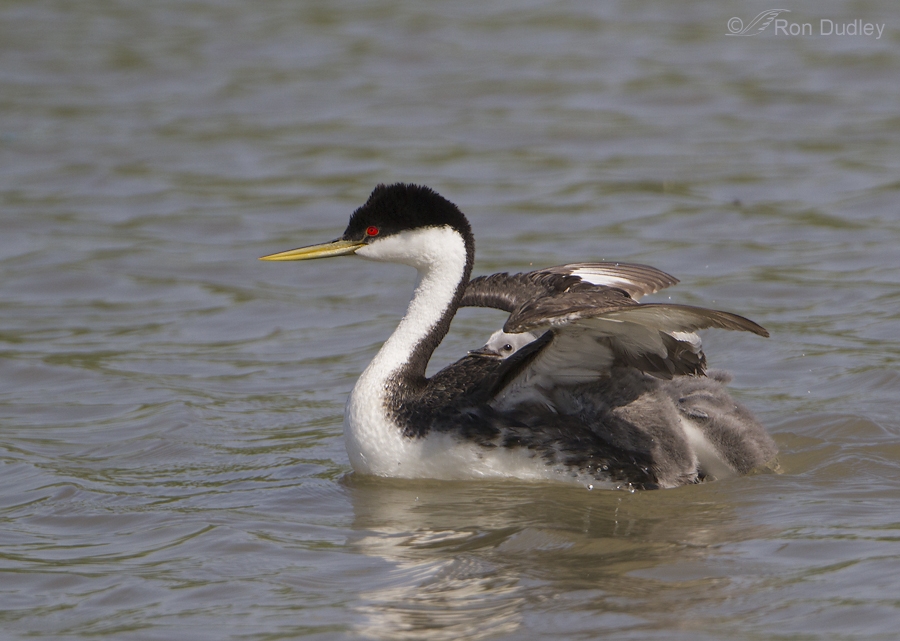
At this age Western Grebe chicks are heavy-bodied, small headed, loud, awkward and demanding. They alternately ride on the back of each parent (back brooding) as the other adult rests or hunts for fish to feed to its family. At this stage the youngsters are good swimmers and there’s often not enough room on the parents back for all of the chicks to ride comfortably anyway so the parent uses an interesting strategy to “dump its load” into the water when it needs a break.
Western Grebe Mated With Clark’s Grebe
Pied-billed Grebe On Nest
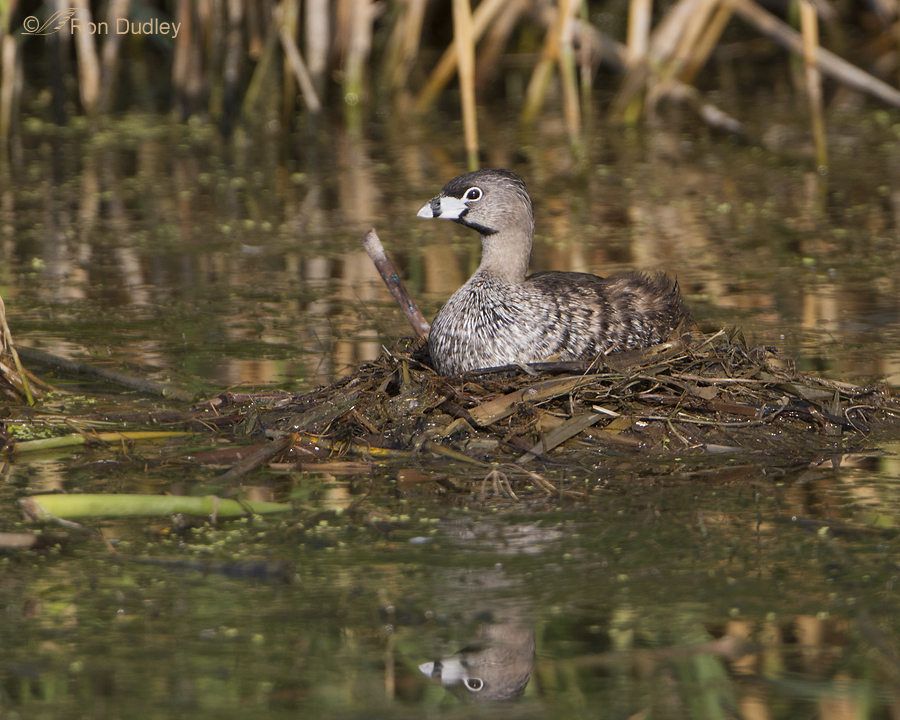
Yesterday morning I was very surprised to see this active nest so close to the loop road at Bear River Migratory Bird Refuge. Both parents incubate and the sexes are similar so I don’t know if this was the male or the female but the apparent mate of this bird was hanging around in the general vicinity.
Clark’s Grebe Blowin’ In The Wind
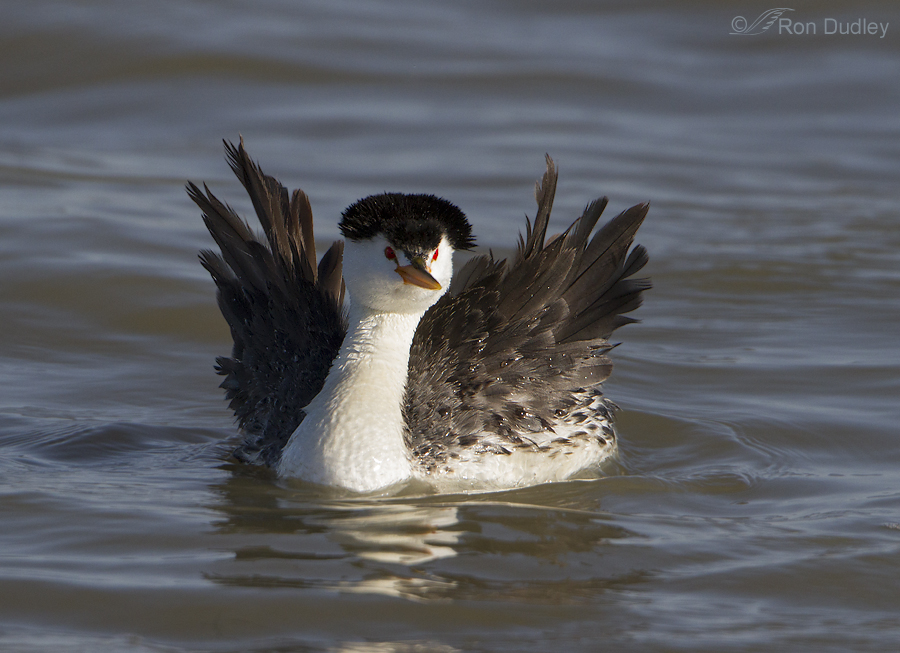
Three days ago at Bear River Migratory Bird refuge I had some wind to contend with as I was photographing this Clark’s Grebe. It made the water a little choppy and would occasionally ruffle the feathers of one of the birds when it turned its back to the breeze.
The effect varied fairly dramatically.
American Bittern In Habitat
The American Bittern may be the most elusive avian subject I’ve ever photographed. They’re solitary, cryptically colored and their preferred habitat is wetlands with tall, emergent vegetation. And they’re extremely secretive by nature. So much so that very little is known about their biology, which is too bad because perhaps if we understood them better we could more effectively manage their seriously declining populations.
Barn Swallow
I’ve always had a “thing” for Barn Swallows. I’m sure it goes back to my childhood on the family farm in Montana where they nested in huge numbers on and in all of the many old barns, granaries and outbuildings. As a kid I spent many hours watching their graceful flight with their long forked tail and pointed wings being quite distinctive. Another thing (besides the fond memories) that I’m indebted to them for is that the species indirectly led to the beginning of the conservation movement in the United States. The destruction of Barn Swallows for the millinery trade (those long tail feathers were apparently considered very attractive on the hat of a lady) during the 1800’s led to George Bird Grinnell’s article in Forest and Stream in 1886 that prompted the founding of the first Audubon Society. Hooray for Barn Swallows ! I think the way they’ve adapted to man is fascinating. They’re now the most abundant and widely distributed swallow in the world and originally they nested almost exclusively in caves but with the advent of human structures that has changed dramatically. They have almost completely converted to nesting in or on man-made structures like bridges, culverts and the eaves of buildings. In fact, in modern times any Barn Swallows found nesting on natural sites create quite a stir among birders and are often reported with much interest. 1/640, f/8, ISO 500, 500 f/4, 1.4 tc, natural light But I must admit that I also enjoy them in natural settings. I found this bird at Bear River MBR where…
Sandhill Crane Take-off Sequence
On a beautiful spring morning in May of 2011 we found a small group of Sandhill Cranes on a pond as we approached Bear River Migratory Bird Refuge. We were some of the first folks on the access road and our careful approach made two of the birds a little nervous so they decided to vacate the area. I believe they were a mated pair. I got my pickup stopped and my lens aimed just after the first bird began to take off. 1/2500, f/6.3, ISO 500, 500 f/4, 1.4 tc I believe this to be the slightly larger male who took off first. The unconventional composition is meant to highlight the water splashes behind the bird. If you’ve never heard the distinctive, penetrating and very loud bugling calls (also called “trumpeting”) of this species you’re really missing something. As is typical of these cranes, these two were calling during lift off and just looking at these images has that haunting sound bouncing around in my head. These cranes have an unusual throat anatomy that allows them to make such resonating sounds. The trachea extends and coils down the long neck and well into the sternum. This unique anatomy “expands the amplitude and alters the pitch of the voice by the addition of harmonies”. Until these birds are 9-10 months old they can produce only a series of trilled whistles and peeps but as they mature their tracheas elongate and coil intrasternally which allows them to develop the adult voice. If you’re curious about their call, check out both the “unison call” and…


